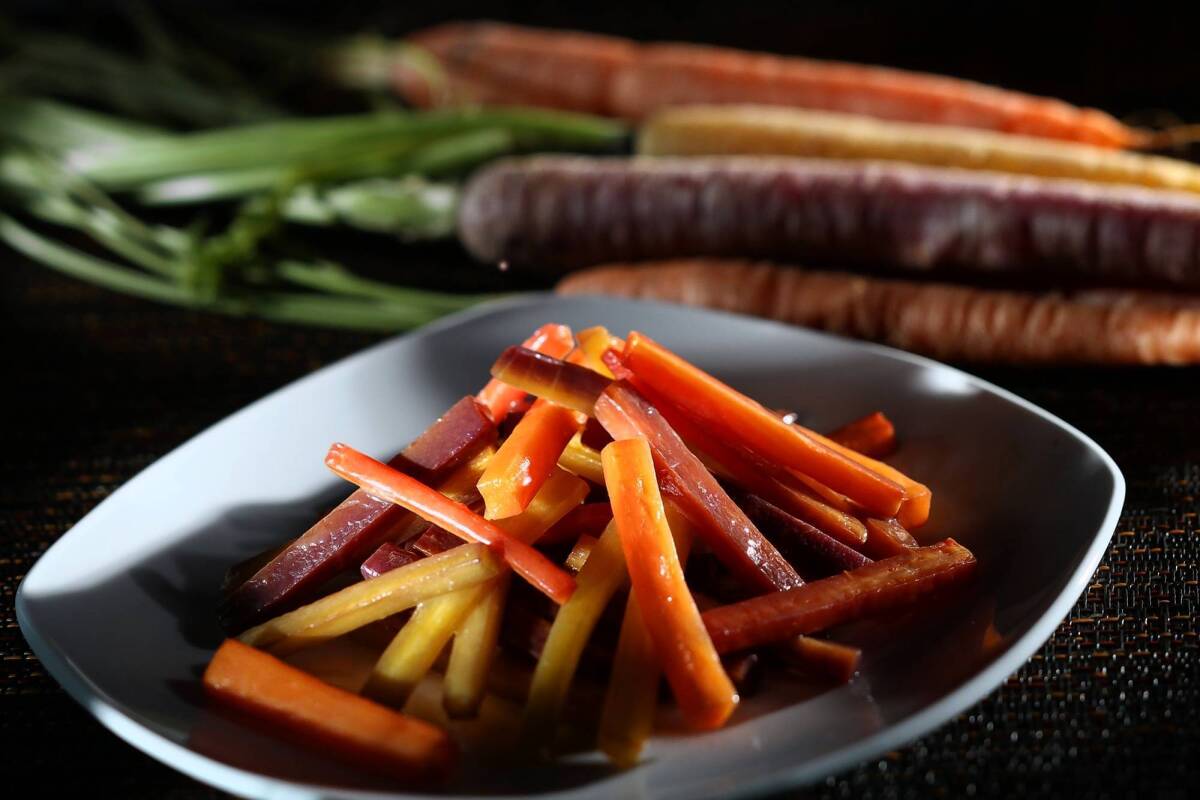The California Cook: Glazing, what good vegetables deserve

So many home cooks are obsessed with making dishes just like the professionals do. They buy hand-forged Japanese chefs knives, seek out $50 bottles of olive oil and spend hours preparing elaborately composed dishes from âThe French Laundry Cookbookâ or âEleven Madison Park.â
But a lot of them have never even heard of one of the most basic techniques of cooking, one that requires no special equipment or expensive ingredients. In fact, you can probably do it in just a few minutes with what you have in your kitchen right now.
Itâs called glazing vegetables, and itâs as fundamental to a cookâs repertoire as roasting a chicken.
A few ideas for glazed vegetables
In fact, it may be more so. Learn to roast a chicken and you can probably extrapolate that knowledge to, well, roasting a turkey. But glazing works for all sorts of vegetables, and particularly now, when weâre enjoying the full flush of the spring harvest, itâs something you ought to master.
Hereâs how you do it:
Cut the vegetables into equal-sized pieces, so they cook at the same pace. Place them in a skillet just big enough to hold them, one that has a securely fitting lid.
Add just enough water to cover the bottom of the pan (roughly 1/2 cup â very dense vegetables will take a little more; soft vegetables will take a little less). Add a little bit of fat: a thumb-sized knob of butter or a couple of glugs of olive oil. If you have seasonings that need to be cooked â minced onions, shallots or garlic â add them too.
Place the pan over medium heat, cover tightly and cook. Stir every couple of minutes, checking to see when the vegetables are becoming tender. If the water gets low too quickly, add a splash â just 2 or 3 tablespoons.
Just when a paring knife penetrates easily, remove the lid and turn the heat up to high. Cook, tossing and stirring fairly constantly, until the liquid is gone and the vegetables are shiny and just beginning to brown; itâll take only a couple of minutes.
Add the final seasonings â a sprinkle of salt, chopped herbs or spices, and a splash of acidity from a squeeze of citrus or a spoonful of vinegar â and serve.
Seriously, thatâs all there is to it.
Hereâs why itâs so great: As the vegetables cook under cover, they release moisture of their own (most vegetables are more than 90% water). When you uncover the pan and turn up the heat, the water evaporates and the flavor essences left behind mix with the fat to coat the vegetables with a delicious glaze.
At one time, I insisted on calling this âbraisingâ because it is very similar to what happens when you stew a piece of meat. That little bit of added liquid serves to soften the cellulose structure of the vegetable, releasing the juices inside, which are then reduced to a sauce. In the case of vegetables, itâs just done backward; you soften with liquid first, then brown at the end.
But at this point Iâm willing to reconsider. Partly itâs a bow to the wisdom of my betters. If Thomas Keller says itâs âglazing,â not âbraising,â who am I to argue? Mainly, though, âglazingâ just sounds prettier. No doubt thatâs at least partly the result of decades of drably colored and dully flavored overcooked stewed vegetables. That association is not at all appropriate for these sparkling gems.
Glazing doesnât work with all vegetables. They need to be firm enough so they wonât fall apart during cooking. But for the ones it does work for, itâs almost infinitely flexible. Master this one technique and you have learned dozens of ârecipes.â
The only thing it requires is a certain amount of minding â getting the vegetables perfectly done (cooked through but not mushy) requires paying attention. But thatâs one professional skill that every home cook needs to acquire.
More to Read
Eat your way across L.A.
Get our weekly Tasting Notes newsletter for reviews, news and more.
You may occasionally receive promotional content from the Los Angeles Times.










